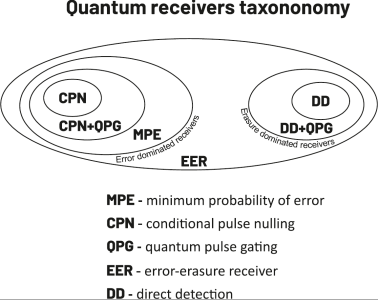Quantum receivers for efficient deepspace optical communications

Development of deep-space optical communication systems (DOCS) poses a number of technical challenges as compared to conventional radio-frequency links. The higher energy of a single quantum (a photon) at the optical carrier frequency implies the need for dedicated modulation formats and receiver designs. The current technical standard for efficient DOCS is pulse position modulation (PPM) format combined with direct detection (DD) which for photon-starved links is implemented as photon counting. However, theoretical analyses indicate that this combination is not necessarily optimal, as in general it does not saturate the Gordon-Holevo capacity limit for an optical channel. While in the case of downlink communication the selection of available modulation formats is fixed after the completion of the onboard transmitter and the launch of the mission, it is possible to continue development and upgrades of the ground receivers, in order to extend the duration of the communication windows and/or to enable operation in less favourable atmospheric conditions. In this project authors aim to optimize the detection strategy of single-photon-level optical signal by analyzing and comparing the performance of various quantum receivers types. The receiver performance is characterized either in terms of average probability of symbol detection error or in terms of the mutual information per communication channel use (channel capacity) which assumes optimal classical (outer) error correction coding.
